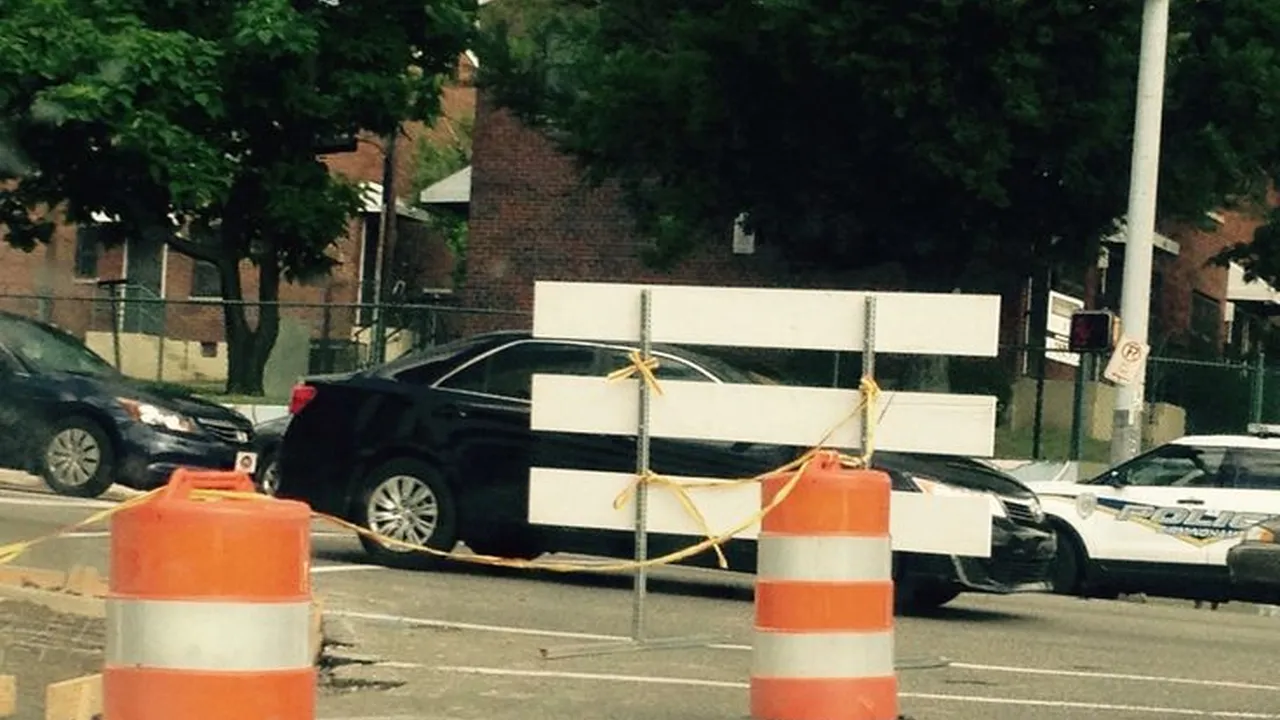Rear Cross-Traffic Alert: A Guide to Safer Backing

Understanding Rear Cross-Traffic Alert Technology and its Importance
Alright, let's talk about something super important for anyone who drives – Rear Cross-Traffic Alert, or RCTA. Seriously, this tech is a game-changer, especially if you've ever had that heart-stopping moment backing out of a parking spot when you can't see what's coming. RCTA is designed to help you avoid those situations. It uses sensors, usually radar, to detect vehicles approaching from the sides while you're backing up. Think of it as having an extra set of eyes (or ears, since it often beeps!) to alert you to potential danger. Why is it important? Well, backing accidents are surprisingly common, and RCTA can significantly reduce your risk of one. Visibility is often limited when backing, especially in crowded parking lots or when obstructions like SUVs or vans are blocking your view. RCTA helps bridge that gap, giving you precious seconds to react and avoid a collision. It's not just about convenience; it's about safety for you, your passengers, and everyone around you.
How Rear Cross-Traffic Alert Systems Work A Deep Dive
So, how does this magic work? The key is the radar sensors, usually located in the rear bumper. These sensors emit radar waves that bounce off objects. The system then analyzes these reflected waves to determine the distance, speed, and direction of approaching vehicles. The system is smart enough to filter out stationary objects like fences or parked cars, focusing on moving vehicles that pose a potential threat. When a vehicle is detected approaching from either side, the system alerts the driver. The alert usually comes in the form of an audible beep, visual warnings on the rearview camera display, or sometimes even vibrations in the driver's seat. The range of detection varies depending on the system and vehicle, but it's typically around 50 to 75 feet. One important thing to remember is that RCTA is not a substitute for careful driving. It's a supplementary safety feature that should be used in conjunction with your own visual checks and awareness of your surroundings. Weather conditions like heavy rain or snow can sometimes affect the performance of the radar sensors, so it's always best to be extra cautious in adverse conditions. Essentially, RCTA uses sophisticated sensor technology to provide an extra layer of protection when backing up, giving you a better chance of avoiding accidents in tricky situations.
Benefits of Rear Cross-Traffic Alert Increased Safety and Peace of Mind
Okay, let's break down the real benefits of having RCTA in your car. First and foremost, it's about increased safety. We've already touched on how it helps prevent backing accidents, but think about the implications of that. Fewer accidents mean fewer injuries, less property damage, and lower insurance premiums. That's a win-win-win! Beyond the purely practical benefits, RCTA also provides peace of mind. Knowing that you have an extra set of eyes watching your back (literally!) can make backing out of tight spots less stressful. This is especially valuable for drivers who are less confident in their backing skills or who frequently drive in areas with heavy traffic and limited visibility. It also makes navigating busy parking lots a lot less nerve-wracking. You can focus on the task at hand without constantly worrying about what might be coming from the sides. Another often-overlooked benefit is the potential for reduced driver fatigue. Constantly craning your neck and straining to see when backing up can be tiring, especially on long trips. RCTA helps alleviate some of that strain, allowing you to drive more comfortably and safely. In short, RCTA offers a significant boost to both safety and driver comfort, making it a valuable addition to any vehicle.
Limitations of Rear Cross-Traffic Alert Understanding its Boundaries
Alright, while RCTA is awesome, it's crucial to understand its limitations. It's not a perfect system and shouldn't be relied upon as the sole means of avoiding accidents. First, the range of the sensors is limited. If a vehicle is approaching too quickly or is too far away, the system might not detect it in time to provide a warning. Similarly, small objects like pedestrians, bicycles, or motorcycles might not be reliably detected, especially if they are close to the ground or obscured by other objects. Weather conditions can also affect performance. Heavy rain, snow, or fog can interfere with the radar signals, reducing the system's range and accuracy. Another limitation is that the system is designed to detect vehicles moving perpendicular to your car. If a vehicle is approaching at an angle, the system might not register it as a threat. Also, remember that RCTA is designed to work while backing up. It won't provide warnings if you are driving forward. Finally, the system relies on the driver to react appropriately to the warnings. If you ignore the alerts or react too slowly, an accident could still occur. The key takeaway here is that RCTA is a valuable safety aid, but it's not a replacement for attentive driving and careful visual checks. Always be aware of your surroundings and use RCTA as a supplement, not a substitute, for your own vigilance.
Choosing the Right Rear Cross-Traffic Alert System Key Considerations
So, you're thinking about getting RCTA? Great! But how do you choose the right system? Here are a few key things to consider. First, think about the type of vehicle you drive. Some systems are designed for specific makes and models, while others are more universal. If you're buying a new car, RCTA is often available as an option or included as part of a safety package. If you're adding it to an existing vehicle, you'll need to look at aftermarket systems. Next, consider the range and sensitivity of the sensors. A system with a longer range and more sensitive sensors will be able to detect vehicles earlier and more reliably. However, more sensitive sensors can also be more prone to false alarms. Think about the type of alerts the system provides. Do you prefer audible beeps, visual warnings, or vibrations? Some systems offer a combination of these. Also, consider the ease of installation. Some aftermarket systems are relatively easy to install yourself, while others require professional installation. Finally, think about your budget. RCTA systems can range in price from a few hundred dollars to over a thousand, depending on the features and brand. Do your research, read reviews, and compare different systems before making a decision. Choosing the right RCTA system can significantly improve your safety and peace of mind, so it's worth taking the time to find one that fits your needs and budget.
Popular Rear Cross-Traffic Alert Products on the Market A Comparison
Alright, let's dive into some specific RCTA products you might encounter. Remember, availability and pricing can change, so always double-check with retailers. We'll look at both integrated OEM systems (those that come with the car) and aftermarket options.
* **OEM Integrated Systems (Examples: Honda Sensing, Toyota Safety Sense, Subaru EyeSight):** These are generally well-integrated and offer seamless performance. The Honda Sensing system, found on many Honda models, includes RCTA as part of a suite of safety features. It's generally reliable and easy to use. Toyota Safety Sense offers a similar package. Subaru's EyeSight, while primarily known for its adaptive cruise control and pre-collision braking, often includes RCTA in its higher trim levels. The advantage of these systems is that they are designed specifically for the vehicle and are typically covered by the manufacturer's warranty. The downside is that you're stuck with whatever features and performance they offer. Pricing is obviously tied to the cost of the vehicle itself.
* **Brandmotion Rear Vision System:** This aftermarket system is a popular choice for adding RCTA to older vehicles. It typically includes a rear-view camera and radar sensors that are installed in the rear bumper. It offers both audible and visual alerts. Installation can be a bit tricky, so professional installation is often recommended. Expect to pay around $500-$800 for this system, plus installation costs.
* **Echomaster RVM-10:** Another reputable aftermarket option. Echomaster is known for its quality and reliability. The RVM-10 system features a high-resolution rear-view camera and advanced radar sensors. It also offers customizable alert settings. This system tends to be a bit more expensive, ranging from $700 to $1000, plus installation.
* **GOSHERS Radar Blind Spot Detection System with Rear Cross Traffic Alert:** This system offers both blind spot monitoring and rear cross-traffic alert. This can be a good value if you're looking to add both features. It's generally less expensive than dedicated RCTA systems, often costing around $300-$500. However, the performance might not be quite as refined as more specialized systems.
* **Comparison:** When comparing these systems, consider the range of the sensors, the accuracy of the alerts, the ease of installation, and the overall cost. OEM systems are generally the most reliable and well-integrated, but they are obviously only available on new vehicles. Aftermarket systems offer more flexibility and can be added to older cars, but they can be more challenging to install and might not perform as seamlessly as OEM systems. Read reviews and compare specifications carefully before making a decision.
Real-World Scenarios Where Rear Cross-Traffic Alert Shines
Let's paint some pictures to really illustrate when RCTA is a lifesaver. Imagine this: you're parked in a crowded shopping mall parking lot during the holiday season. SUVs and minivans are packed in tight, completely blocking your view of oncoming traffic. Without RCTA, backing out would be a nail-biting experience. But with RCTA, you can confidently back out, knowing that the system will alert you to any approaching vehicles.
Another scenario: You're backing out of your driveway on a busy street. Kids are playing nearby, and a delivery truck is speeding down the road. RCTA can help you avoid a potentially tragic accident by alerting you to the approaching truck, even if your view is obstructed by trees or bushes.
Consider this: You're parallel parking on a narrow city street. Traffic is flowing quickly, and you need to back into the spot quickly and safely. RCTA can help you avoid bumping into the car behind you or getting hit by an oncoming vehicle.
Think about this: You're backing out of a parking space in a dimly lit parking garage. Visibility is poor, and it's difficult to see approaching vehicles. RCTA can provide an extra layer of protection in these challenging conditions.
These are just a few examples of the many real-world situations where RCTA can make a significant difference. It's a valuable safety feature that can help you avoid accidents and protect yourself and others on the road. It's especially useful in situations where visibility is limited or traffic is heavy.
Cost of Rear Cross-Traffic Alert Is it Worth the Investment?
Okay, let's talk money. Is RCTA worth the investment? That depends on your individual needs and circumstances, but generally, the answer is a resounding yes. While the initial cost of adding RCTA to your vehicle might seem significant, consider the potential costs of not having it. A single backing accident can result in thousands of dollars in damages, not to mention potential injuries and increased insurance premiums. RCTA can help you avoid those costs.
Beyond the financial benefits, consider the peace of mind that RCTA provides. Knowing that you have an extra layer of protection can reduce stress and improve your overall driving experience. This is especially valuable for drivers who are less confident in their backing skills or who frequently drive in challenging conditions.
When evaluating the cost of RCTA, consider the long-term benefits. A good RCTA system can last for many years and can potentially prevent numerous accidents over its lifespan. Think of it as an investment in your safety and the safety of others.
While some aftermarket systems can be relatively inexpensive, it's important to choose a high-quality system that is reliable and accurate. Don't skimp on safety. Do your research and choose a system that meets your needs and budget.
Ultimately, the decision of whether or not to invest in RCTA is a personal one. But when you weigh the potential benefits against the potential costs, it's clear that RCTA is a valuable investment in safety and peace of mind. It's a feature that can help you avoid accidents, protect yourself and others, and improve your overall driving experience. So, in most cases, it's definitely worth the money.
Installing Aftermarket Rear Cross-Traffic Alert Systems A Step-by-Step Guide (Simplified)
Okay, you've decided to go the aftermarket route. Here’s a simplified overview – **PLEASE consult the specific instructions that come with your system, and if you're not comfortable with auto electrical work, get a professional to do it!**
1. **Preparation:** Gather your tools (wire strippers, crimpers, multimeter, drill, sockets, etc.). Disconnect the negative terminal of your car battery. Read the installation manual thoroughly.
2. **Sensor Installation:** Locate the mounting points for the radar sensors on your rear bumper. This usually involves drilling holes. Be very careful not to damage any wiring or other components behind the bumper. Mount the sensors securely.
3. **Wiring:** Route the wiring from the sensors to the control module, usually located inside the trunk or under the dashboard. Connect the wires according to the wiring diagram in the installation manual. This typically involves tapping into your car's reverse light circuit for power and signal.
4. **Display/Alert Installation:** Mount the visual display (if included) on your dashboard or rearview mirror. Connect the wiring from the control module to the display.
5. **Testing:** Reconnect the negative terminal of your car battery. Put your car in reverse and test the system. Ensure that the alerts are working properly.
6. **Final Adjustments:** Make any necessary adjustments to the sensor positions or alert settings. Secure all wiring and components.
**Important Safety Notes:**
* Always disconnect the battery before working on electrical systems.
* Use proper wiring techniques to avoid shorts or loose connections.
* Be careful when drilling holes in your bumper.
* If you're not comfortable with any of these steps, get a professional to install the system. Seriously.
This is a very simplified guide. Every system is different, so follow the manufacturer's instructions carefully. Improper installation can damage your car's electrical system or render the RCTA system ineffective.
Future of Rear Cross-Traffic Alert Advancements and Innovations
The future of RCTA is looking bright! We can expect to see even more advanced and sophisticated systems in the years to come. One area of development is improved sensor technology. Newer radar sensors will likely be more sensitive and accurate, with longer ranges and better performance in adverse weather conditions. We might also see the integration of other sensor technologies, such as cameras and ultrasonic sensors, to provide a more comprehensive view of the vehicle's surroundings.
Another area of innovation is in the way alerts are presented to the driver. We might see more sophisticated visual displays, such as augmented reality overlays on the windshield, that provide more intuitive and informative warnings. We could also see the integration of haptic feedback, such as vibrations in the steering wheel or seat, to provide more immediate and attention-grabbing alerts.
Furthermore, RCTA is likely to become more integrated with other advanced driver-assistance systems (ADAS), such as automatic emergency braking and lane-keeping assist. This could lead to more proactive safety features that can automatically take action to avoid accidents, even if the driver is not paying attention.
Finally, we can expect to see RCTA become more widely available on a wider range of vehicles, including more affordable models. As the technology becomes more mature and costs come down, it will become a standard safety feature on most new cars. The ultimate goal is to eliminate backing accidents altogether, and RCTA is a key step in that direction. The future of driving is safer and more convenient, and RCTA is playing a vital role in making that future a reality.
:max_bytes(150000):strip_icc()/277019-baked-pork-chops-with-cream-of-mushroom-soup-DDMFS-beauty-4x3-BG-7505-5762b731cf30447d9cbbbbbf387beafa.jpg)






